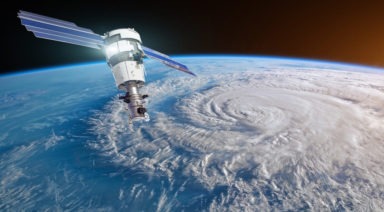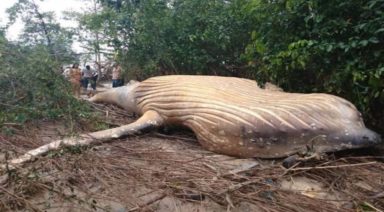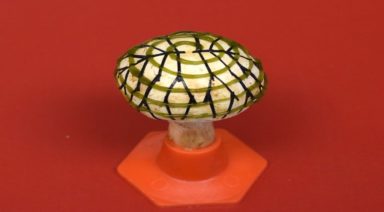Scientists Propose Splicing Tardigrade DNA with Humans’

Human beings have long strived to push the boundaries of space exploration and habitation, from the race to the Moon, to the multi-country missions to Mars. But is the human body really the best suited for the next stage of space travel? Beyond the technological and aerospace advances, the largest challenge is also the greatest potential for a scientific revolution – the limitations of the human body’s response to long term and long-distance space travel.
Surprisingly, the being that is providing many answers to the secrets surrounding space travel might be found in the tiny tardigrade, the microscopic organism that has evolved to survive the most extreme natural circumstances, from the bottom of the ocean to space’s vacuum. Also called “water bears” or “moss piglets,” these organisms measure at .05mm long, but are found literally the world’s many environments. Their unique adaptation process includes being able to survive some of the most extreme heat temperatures and external pressures by shrinking and dehydrating to .001 percent of its original size.
Tardigrades in this stage are called “tuns” in which the organism shuts down it’s metabolism to a near-zero point or cryptobiosis, including complete dehydration and lowered oxygen levels. When they land in a habitable environment, tardigrades are able to rehydrate back to their normal state and size. Research has shown that this evolutionary flexibility carries ramifications beyond environmental hardiness to the actual lifespan of the microorganism. For example, the average lifespan for a tardigrade is 2.5 years; however, scientists have discovered ones in the Antarctic that may be as old as 30 years!
In contrast, the average lifespan of a human is said to be 79 years old, but the variables associated with this age expectancy can range from inherited genetics, economic status, education, geography, and more. Unlike the tardigrade, humans often have to rely on external factors against environmental extremes, both on Earth and in space.
In addition to this being one of the most interesting scientific adaptations, could it be that the tardigrade’s biological flexibility could have implications for human space travel?
From Twins to Tardigrades: Will Genetic Engineering on Humans Prove Effective?
One of the biggest concerns of space travel is deep-space radiation exposure, especially as we push farther and farther into space. In 2015, NASA studied the genetic impact of deep and long term space on identical twin astronauts Mark and Scott Kelly in which one twin (Scott) traveled to space for a year, while the other twin (Mark) stayed on Earth. The difference was striking – Scott Kelly experienced severe physical stress including swelling and immune system overdrive, as well as marked differences in his telomeres, which lengthened in unusual ways, in contrast to his Earth-bound twin brother.
The conclusions of this are helping drive the energy behind the exploration of the hybridization of humans and tardigrades capable of withstanding the physical rigors and radiation levels of space travel, specifically in the push to colonize Mars. If this sounds like the plotline out of a futuristic science fiction fantasy, this idea is perhaps closer than we may think.
Genetic engineering is nothing new and until 2012, it was a time and labor-intensive, messy process. But in 2012, a revolutionary new approach to genetic engineering was introduced – CRISPR, or Clustered Regularly Interspaced Palindromic Repeats which changed how we discover, map and manipulate genes. he recent CRISPR research is already being utilized to correct genetic mutations in embryos. Could the same cut and paste software approach that CRISPR employs be used to create a superhuman/tardigrade space species?
Scientists have studied tardigrade DNA to try to uncover the secret behind this almost indestructible organism. The research has been able to closely identify certain proteins emitted when exposed to adverse conditions, such as extreme heat and ice. Other proteins protect against damaging radiation exposure. The impact of this research is beginning to be looked at for biotechnology and medical applications, as well as readiness for deep and extended space travel and habitation.
Life on Mars; More Than Square Footage
As Mars colonization creeps closer to becoming a reality, NASA is beginning to look at what physical requirements will be needed for human habitation on the red planet Based on prototypes, the habitats would need to be self-sustaining, impeccably sealed, and with plenty of legroom. Researchers turned to the extended space travel in the International Space Stations for guidance, particularly when it comes to the need for extra square footage.
In contrast, tardigrades require little, or no, external intervention with the likelihood they could easily survive the extreme conditions on planet Mars. In 2007, a number of dehydrated specimens were released into the vacuum of space, with a surprising number not only surviving but being able to return to normal size and reproduce.
What does this all mean for humans and our seemingly unquenchable thirst for space travel? Will we allow genetic engineers to splice a human’s DNA with a tardigrade, in order to achieve conquering the ultimate frontier? Or will we accept our human limitations and look to apply the tardigrade’s reputation as the toughest being toward other scientific fields such as agriculture or health?
The danger in taking genetics into our own hands is that the end result may be in creating a species that is unable to live well in either environment, Earth, or space. Time will be the final decider as to whether the risk is worth what may be discovered.
How to Prepare for Upcoming Solar and Lunar Eclipses

Eclipse season will be here soon, here’s what you can expect and how to prepare for this cosmic dance between the Sun, Moon, and Earth.
Both solar and lunar eclipses hold strong energy in astrology. They can shake us up and stimulate change within ourselves to reach our highest power. We will soon see a partial solar eclipse and a lunar eclipse. What can we expect from these cosmic events?
“Eclipses take place when we have lunar events, which are full moons or new moons that fall close to the nodal axis,” Astrologer Mercedes Arnus Arraut said. “So what is the nodal axis? The nodal axis is the axis of intersection between the orbit of the moon around the Earth and the orbit of Earth around the Sun. That intersection has a north and south, and those points are called nodes. So, the north node represents our destiny; or future, where we’re headed as humanity, what is our destination, what is our direction, where do we need to focus on. In the south, the south node represents our past; what we need to purge, what we need to cleanse, what we need to integrate, what we need to let go…”.
The first eclipse will be on April 30, but Arraut says we will feel it a lot sooner.
“We usually start feeling it around a month before the first eclipse takes place. So, this first eclipse that takes place, the 30th of April, brings many changes into our lives, since all eclipses are like catalysts that align us with our highest purpose. Eclipses literally will cleanse, detox, and be used as tools to show us what path we need to follow,” Arraut said.
Soon after the solar eclipse,we will see a lunar eclipse in May. How does this relate to the solar eclipse we just had?



































